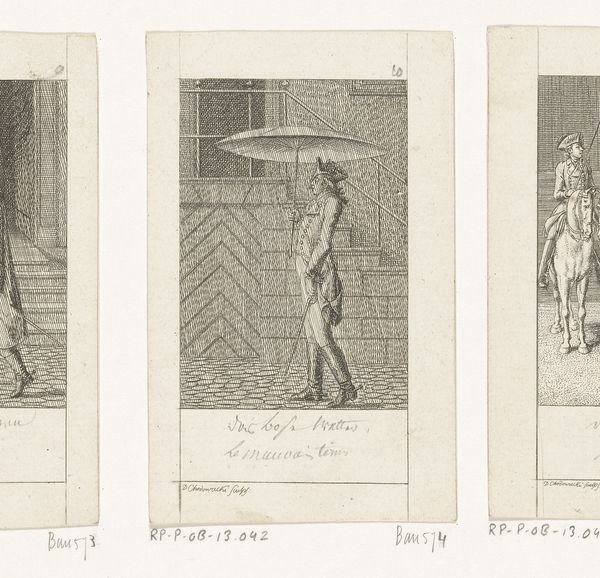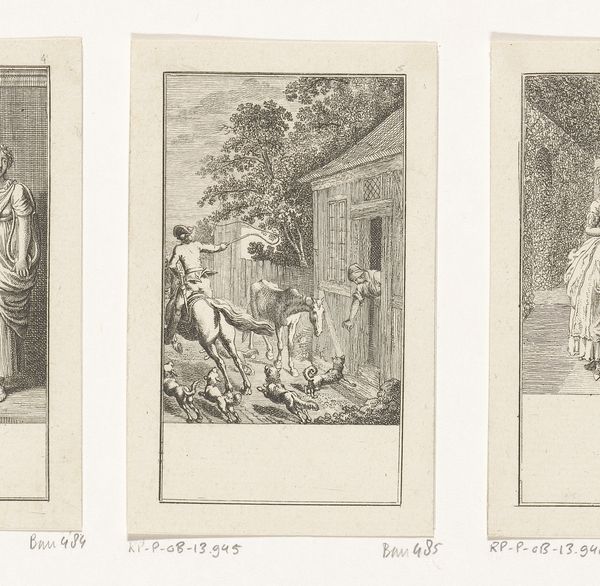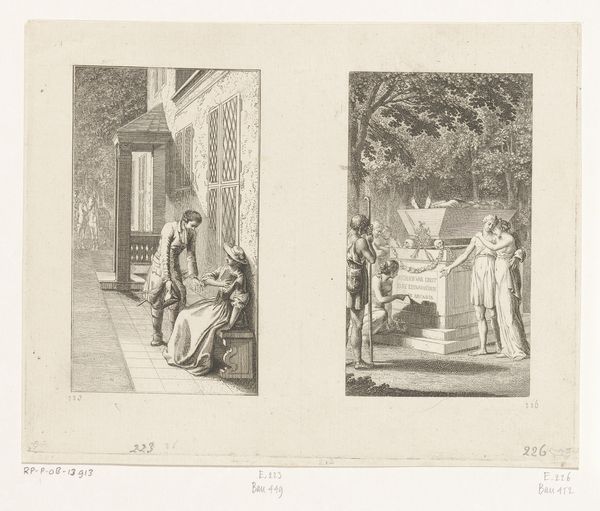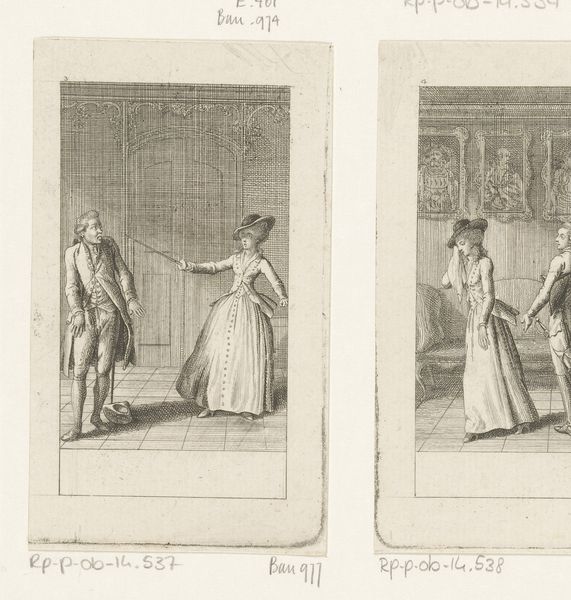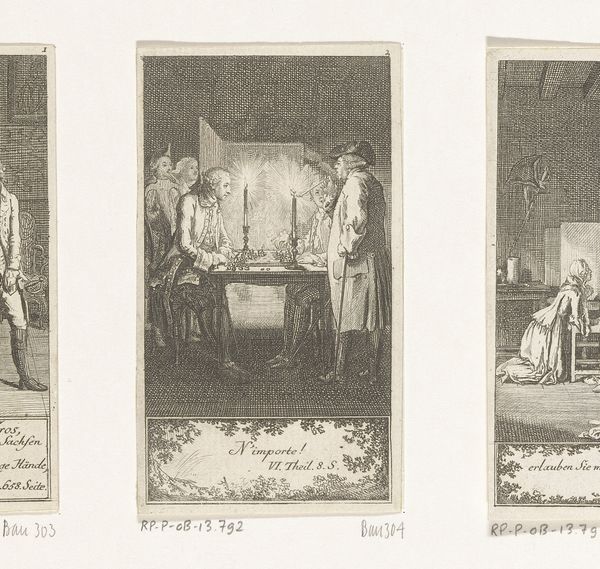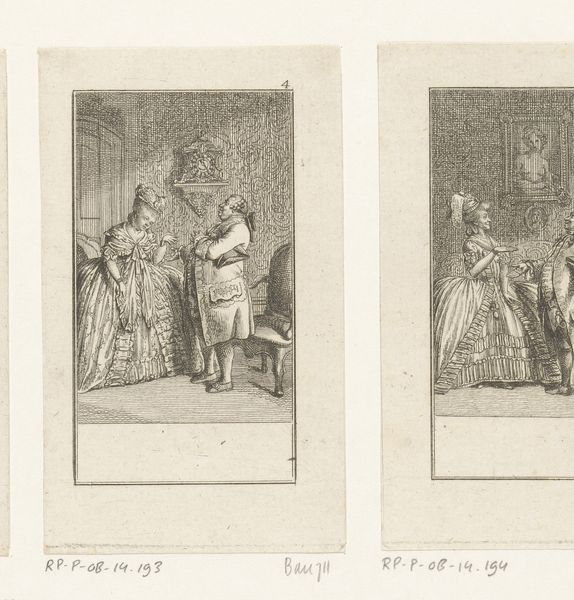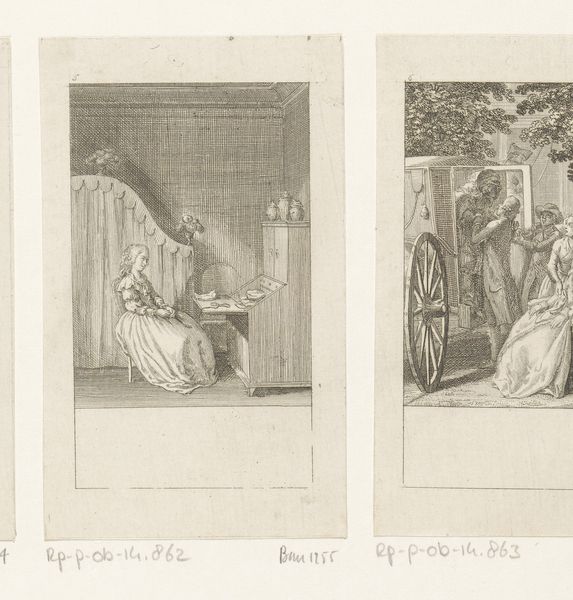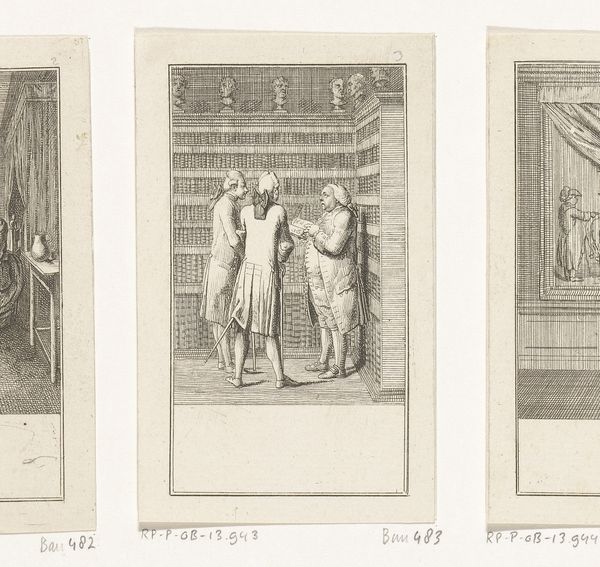
Dimensions: height 102 mm, width 63 mm
Copyright: Rijks Museum: Open Domain
Curator: I am drawn into a mood of solitude and introspection with this image. It is small but evocative; the detail achieved with engraving is amazing. Editor: Indeed. What you're looking at is a print called "Militair in de Regen," or "Soldier in the Rain," by Daniel Nikolaus Chodowiecki, dating back to 1779. Currently, this piece resides at the Rijksmuseum. Curator: I feel such an immediacy here! It's as if Chodowiecki caught him at the end of some fraught affair, or some battle we aren’t privileged to witness. What could a rainy soldier represent to people in the late 18th century? Editor: A figure like this soldier would have definitely resonated as an allegory for resilience and duty, or the sacrifices required by service to the state, especially with conflicts always brewing then. Even today, think of the cultural weight soldiers carry as both symbols of national identity and very human figures marked by hard experience. Curator: And isn't it fascinating how he employs the linearity of Baroque art—that incredible detail!—yet it also whispers of the emerging Romantic sensibility? He's caught between eras, this artist and his poor, rain-soaked soldier. Editor: Precisely! And if you focus on the repetitive, almost hypnotic lines of the cobblestones, and then travel upward to the severe architectural shapes behind the figure, I find the soldier’s weariness is intensified. It feels like he’s stuck between a rock and a hard place... between civic obligation and the soul-crushing realities it inflicts on the body. Curator: He trudges ever onward! His cloak hides so much, like an archetype of military service... The sword tells a lot! It carries on, and weighs down every era. Editor: Yes. Even through the act of viewing the print, aren’t we implicated, generation after generation, in projecting hopes and memories, national myths and anxieties, onto images like this solitary figure? Curator: Thank you, you helped me dig further to imagine it. Editor: Thank you too. It seems the artwork speaks a universal language to people of different backgrounds, and that feels like its true power.
Comments
No comments
Be the first to comment and join the conversation on the ultimate creative platform.
